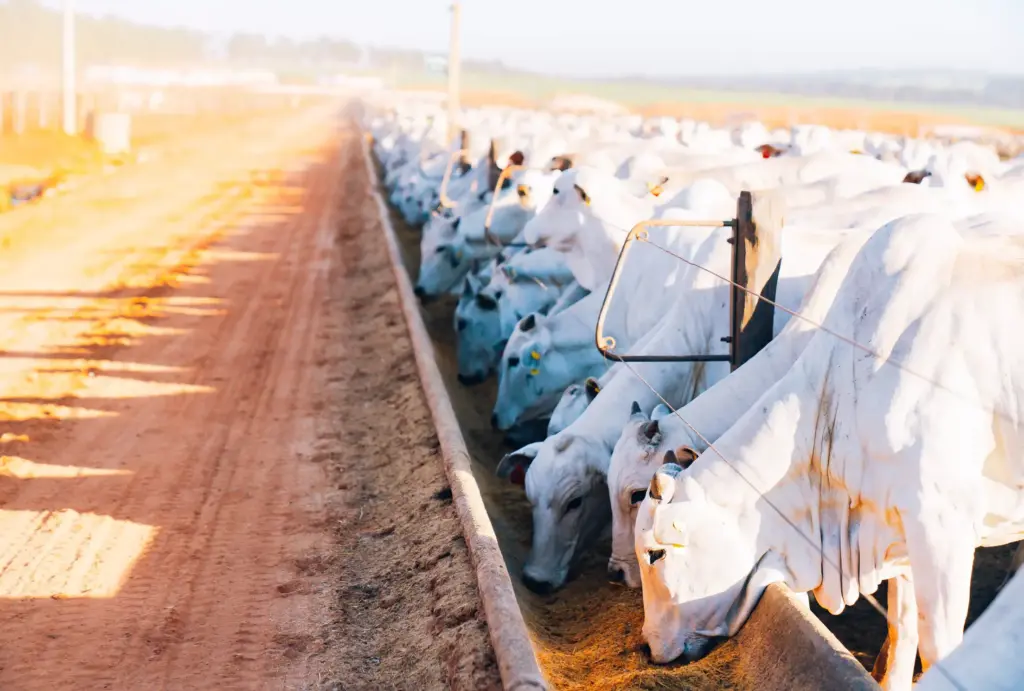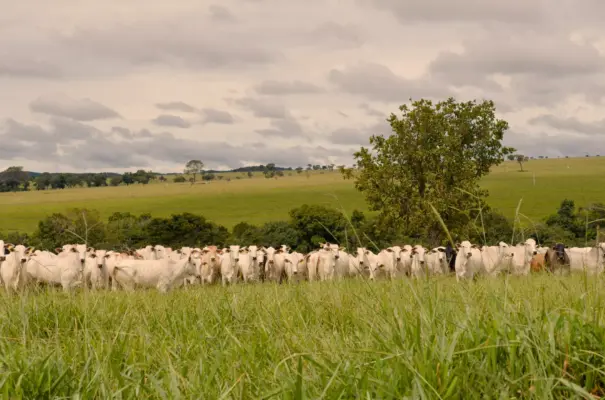Anyone who follows me here and on social media knows how much I value quality content and solid, data-driven information. I’ve long argued for the reality of sustainable livestock farming and the importance of demonstrating its efficiency more rigorously. After following Minerva Foods’ work, I’m even more certain that I’m on the right track.
Animal’s welfare

It’s impossible to talk about sustainable livestock without talking about animal welfare. Today, especially on social media, videos with shocking images spread faster than ever. Isolated footage of mistreated animals ends up making it seem like the exception is the rule and we can’t accept that.
Animal welfare (AW) is one of the central pillars of Minerva Foods’ operations. The company adopts rigorous protocols and international standards, such as those of the North American Meat Institute (NAMI), which guide ethical and responsible handling practices across all its facilities. The AW compliance matrix covers five main domains: nutrition, health, environment, behavior, and mental state, ensuring animals are treated with dignity and respect. To make this even clearer:
- Nutrition: ensures animals have continuous access to clean water and sufficient feed to meet their nutritional needs, promoting healthy growth and preventing deficiencies.
- Health: ensures animals are in good physical condition, free from disease, injury, or unnecessary suffering. This domain includes preventive measures such as vaccination and proper handling, as well as treatment in case of illness.
- Environment: assesses and improves the place where animals live, ensuring it is comfortable, safe, and appropriate for each species. This includes adequate space, ventilation, temperature, and protection from the elements.
- Behavior: recognizes the importance of providing animals with the opportunity to express natural, species-specific behaviors. This includes access to open spaces, social interaction, and stimuli that help prevent stress or boredom.
- Mental state: considers the animals’ emotional aspects, creating conditions that reduce stress, fear, and other negative experiences, while encouraging feelings of comfort, safety, and overall well-being.
Through this matrix, Minerva Foods systematically assesses its operations and suppliers, identifying opportunities for improvement and ensuring that the practices adopted align with international protocols and local legislation. In this way, the company not only complies with standards but also leads by example by promoting comprehensive care for animals across the entire value chain. According to the 2023 sustainability report, 100% of Minerva’s processing facilities are certified under animal welfare standards. Key indicators include:
- 94.11% of animals stunned on the first shot.
- Investments of over US$ 806.4 thousand in animal welfare infrastructure.
- 2,700 hours of training conducted with employees and third parties, including drivers and ranchers.
The company also stands out in the Business Benchmark on Farm Animal Welfare (BBFAW), where it maintains its Tier 3 ranking, demonstrating ongoing progress in implementing animal welfare practices. This shows the company goes beyond the basics, integrating animal welfare as a key part of its business and sustainability strategy.
In summary, BBFAW is a global benchmark for assessing and encouraging ethical, sustainable practices in farm animal welfare, contributing to a more responsible and transparent value chain.
How can we talk about responsible livestock farming without talking about environmental sustainability?
Environmental sustainability is a strategic pillar for Minerva Foods. Since 2021, the company has pursued ambitious targets to reach net-zero greenhouse gas (GHG) emissions by 2035. The Renove program is one example of how Minerva promotes low-carbon practices, such as Integrated Crop-Livestock-Forestry (ILPF) systems and the restoration of degraded pastures.
Carbon-neutral certification projects
In 2023, the “Zero Carbon Impact” line was launched, with products certified as carbon-neutral. This project includes:
- Pre-selection of farms aligned with zero-deforestation criteria.
- Calculation of emissions from farms and processing facilities.
- Certified farms working continuously to reduce emissions.
- Export of certified products to international markets.
Moreover, the carbon credit origination program reinforces Minerva’s pioneering approach to implementing regenerative practices through its subsidiary MyCarbon. In 2023, Minerva Foods made significant progress in mapping its supply chain. The data collected show that 84.10% of the animals purchased are raised with full-time pasture access, and 71.29% of the cattle come from pasture-based systems, ensuring greater welfare and sustainability.
To ensure compliance with its guidelines, the company conducts regular audits and provides technical training for ranchers, totaling more than 50,000 hours of capacity-building over the past few years.
We’ve often heard from other countries that we’re not sustainable. Recently, there have been several instances of prominent figures from other countries—France, for example—claiming that our livestock sector is not sustainable. Again, you can’t argue with facts. Our job is to make them ever clearer.
Minerva Foods participates in global initiatives such as the Global Roundtable for Sustainable Beef (GRSB) and the ILPF Network. These partnerships strengthen knowledge exchange and foster the large-scale implementation of sustainable practices. Among its most important certifications are the Gold Seal of the Brazilian GHG Protocol Program—for the fifth consecutive time—and internationally recognized animal welfare protocols, such as the Australian Livestock Processing Industry Animal Welfare Certification System (AAWCS).
See? Just as my commitment to you is always to deliver truthful, high-quality content, Minerva Foods’ commitment to sustainability, animal welfare, and innovation sets an exemplary standard for the global livestock industry. With actions aligned with the Sustainable Development Goals (SDGs) and a focus on regenerative practices, the company shows it is possible to balance economic efficiency with environmental and social responsibility.





